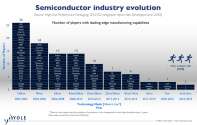Guowang Optical Lithography Machine Exposure System Production Base Project has made new progress, and three companies are listed as winning candidates.
The Beijing Public Resource Trading Service Platform recently released the “Announcement of Winning Candidates for the Clean Project of Projection Lithography Exposure Optical System R&D and Mass Production Base Project”, Silian Intelligent Technology Co., Ltd., etc.Three companies are among the winning candidates.
According to public information, the construction unit of the production base is Beijing Guowang Optical Technology Co., Ltd., and the core R&D team members are from Changchun Guoke Precision, the only ultra-precision optical system industrialization technology research and development unit in China. The basic positioning of Guowang Optics is to establish my country’s independent ultra-precision optical industry technology research and development and production system, and to form the mass production and supply capacity of extremely large-scale IC manufacturing projection lithography machine exposure optical systems, high-end precision optical instruments and equipment, fundamentally Solve the industrialization problem of my country’s IC manufacturing projection lithography machine exposure optical system and high-end precision optical equipment.
Guowang Optical R&D and production base is located in Beijing Economic and Technological Development Zone, with a planned construction area of 120,000 square meters. it will have the R&D, design and mass production and supply capabilities of 350/280nm node, 90/110nm node, 28nm and below nodes for extremely large-scale IC manufacturing projection lithography exposure optical system products.

